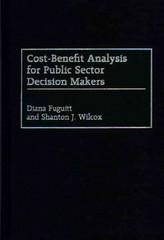Question
I already answered part 1 - please answer part 2. Problem 23.7A, pages 1028-1029 Preparing and Using a Flexible Budget Snells is a retail department
I already answered part 1 - please answer part 2.
Problem 23.7A, pages 1028-1029
Preparing and Using a Flexible Budget
Snells is a retail department store. The following cost-volume relationships were used in developing a flexible budget for the company for the current year.
Yearly Fixed Expenses Variable Expenses per Sales $
Cost of merchandise sold $0.600
Selling and promotion expense $210,000 0.082
Building occupancy expense 186,000 0.022
Buying expense 150,000 0.041
Delivery expense 111,000 0.008
Credit and collection expense 72,000 0.0002
Administrative expense 531,000 0.003
Totals $1,260,000 $0.758
Management expected to attain a sales level of $12 million during the current year. At the end of the year, the actual results achieved by the company were as follows.
Net sales $10,500,000
Cost of goods sold 6,180,000
Selling and promotion expense 1,020,000
Building occupancy expense 420,000
Buying expense 594,000
Delivery expense 183,000
Credit and collection expense 90,000
Administrative expense 564,000
Instructions:
- Prepare a schedule comparing the actual results with flexible budget amounts developed for the actual sales volume of $10,500,000. Organize your schedule as a partial multiple-step income statement, ending with operating income. Include separate columns for (1) flexible budget amounts, (2) actual amounts, and (3) and amount over (under) budget. Use the cost-volume relationships given in the problem to compute the flexible budget amounts.
- Write a statement evaluating the company's performance in relation to the plan reflected in the flexible budget.
Schedule for Comparison of Flexible and Actual Budgeted Revenues and Expenses
Particulars Flexible Budget Actual Over(under) Budget
Net sales $10,500,000 $10,500,000 0
Less: Costs of goods sold 6,300,000 6,180,000 (120,000)
Gross Profit $4,200,000 $4,320,000 $120,000
Less: Operating Expenses
Selling and promotion expense 1,071,000 1,020,000 (51,000)
Building occupancy expense 417,000 420,000 3,000
Buying expense 580,500 594,000 13,500
Delivery expense 195,000 183,000 (12,000)
Credit and collection expense 93,000 90,000 (3,000)
Administrative expense 562,500 564,000 1,500
Operating Income $1,281,000 $1,449,000 $168,000
Step by Step Solution
There are 3 Steps involved in it
Step: 1

Get Instant Access to Expert-Tailored Solutions
See step-by-step solutions with expert insights and AI powered tools for academic success
Step: 2

Step: 3

Ace Your Homework with AI
Get the answers you need in no time with our AI-driven, step-by-step assistance
Get Started


